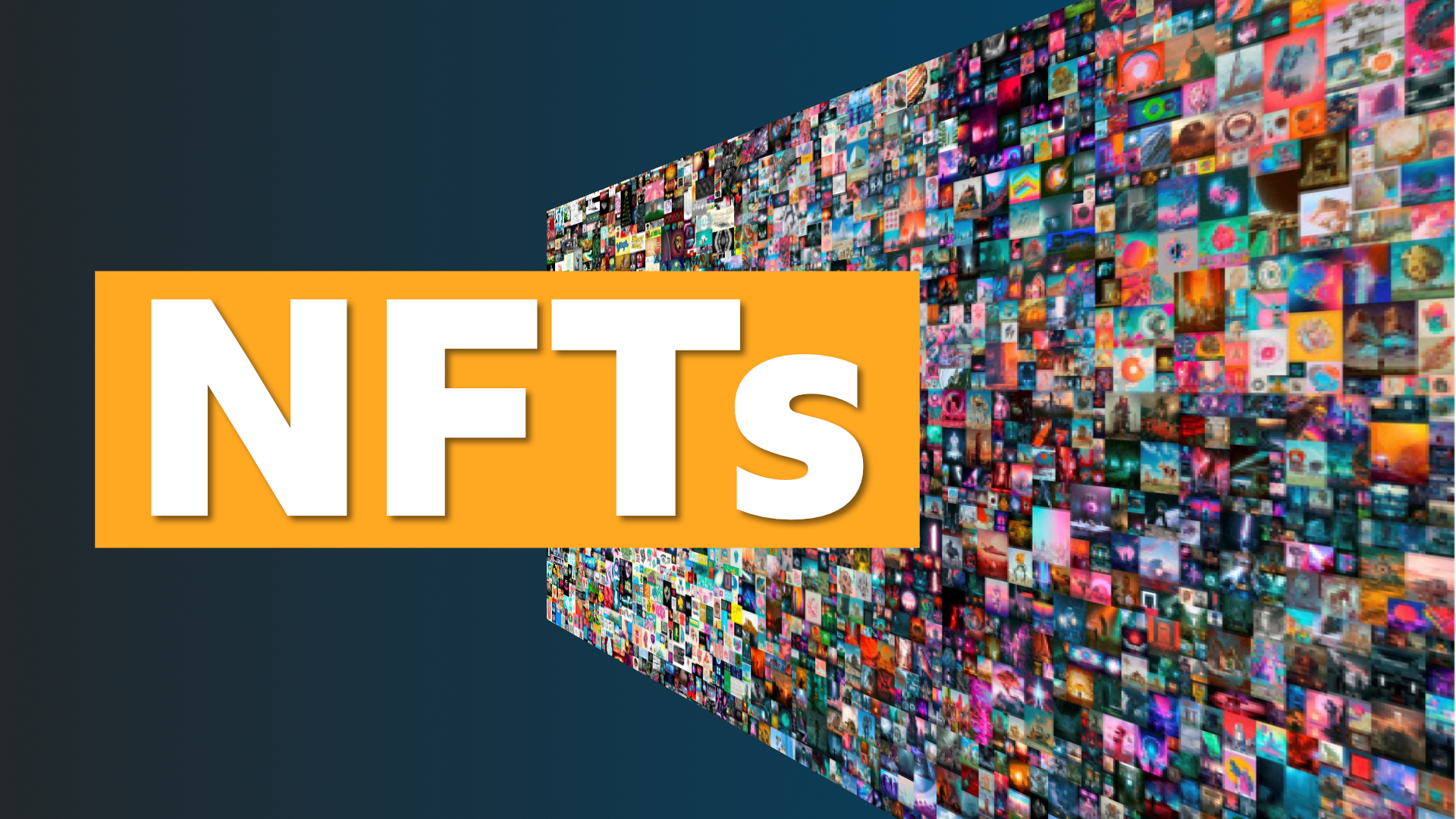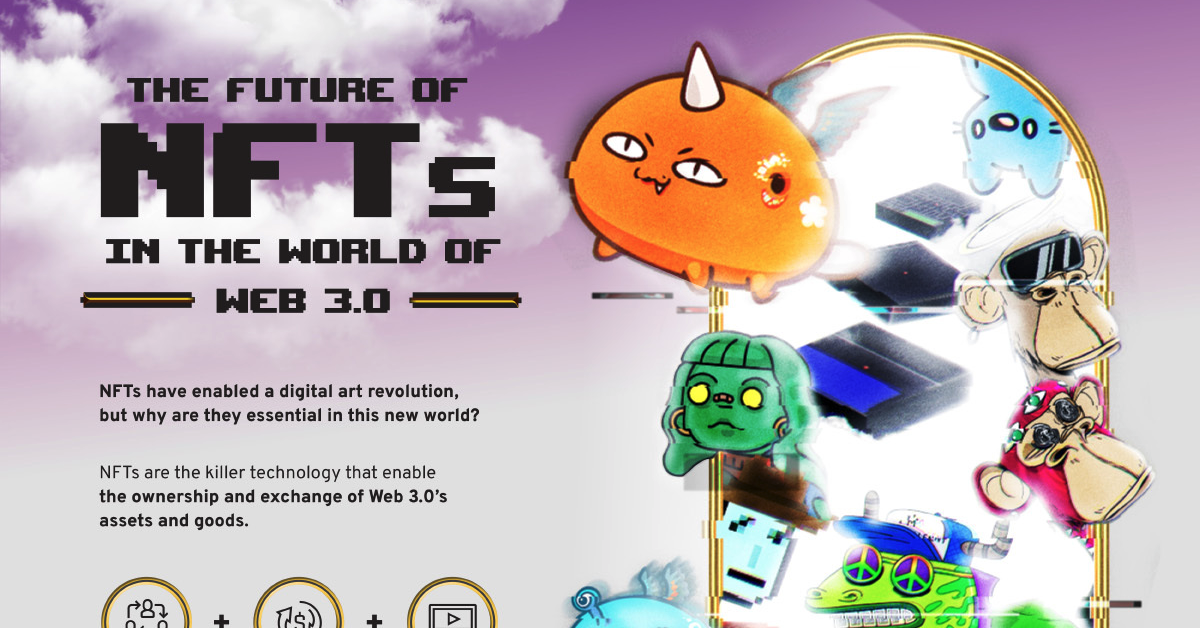Understanding the Fascinating World of NFTs
Non-fungible tokens, or NFTs, have been making headlines lately due to their ability to revolutionize the way we value and exchange digital assets. Essentially, NFTs are digital certificates of ownership for unique items, such as digital art or music, that are verified through blockchain technology. In this post, we'll explore what NFTs are, how they work, and their potential benefits and drawbacks.
What are
NFTs?
According to Jack Dorsey, the CEO of Twitter and Square, "NFTs will enable entirely new business models and will become a new standard for digital creators to monetize their work."
NFTs have gained popularity in recent years, particularly in the art world, where they allow artists to sell digital artworks for millions of dollars. In March 2021, a digital artwork by the artist Beeple was sold for a record-breaking $69 million at Christie's auction house.
As Mike
Winkelmann, the artist known as Beeple, explains, "The idea of selling
something digital and having ownership of it is a very powerful concept. It
opens up a whole new world of possibilities for creators."
NFTs also offer new opportunities for musicians, with some artists releasing exclusive content as NFTs. DJ 3LAU sold an album as an NFT for $11.6 million, stating that "NFTs allow artists to capture the value they create directly from their fans, in real-time."
Overall, NFTs represent a new way for creators to monetize their digital content and for collectors to own unique and rare digital assets. As the market for NFTs continues to grow, it will be interesting to see how they shape the future of the digital economy.
How do
NFTs work?
NFTs use
blockchain technology to verify ownership and prevent duplication or fraud.
When an artist or creator creates an NFT, they assign it a unique code that is
stored on a blockchain ledger. This code can then be used to verify the
authenticity and ownership of the NFT. Each NFT is unique and has its own set
of properties that can't be replicated or duplicated. This is because each NFT
is created using a unique identifier that is stored on the blockchain.
When an NFT is created, it is associated with a specific piece of content, whether it be a piece of digital art, a music album, or even a tweet. One of the key benefits of using NFTs is that they allow creators to monetize their digital creations in ways that were previously impossible. For example, a musician could sell an NFT of their latest album, and the buyer would own the rights to that album in a way that is completely secure and verifiable.
According to Jesse Walden, a venture capitalist at Variant Fund, "NFTs enable a new paradigm of digital ownership, where creators can sell unique digital assets that are scarce and cannot be duplicated. This is a fundamental shift in how we think about digital content and ownership, and it opens up new possibilities for creators to monetize their work."
In addition
to their potential for monetization, NFTs also have implications for the future
of ownership and provenance in the art world. As Kevin McCoy, co-founder of
Monegraph, puts it, "NFTs enable art collectors and enthusiasts to buy and
sell digital works of art with the same level of confidence and security as
they would with physical works of art. This has the potential to revolutionize
the way we think about art ownership and provenance in the digital age."
How are NFTs transacted?
NFTs are typically sold through online marketplaces, such as OpenSea, Rarible, and Nifty Gateway. and buyers can use cryptocurrency to purchase them. These marketplaces are similar to traditional e-commerce platforms like Amazon or eBay, except that they specialize in selling digital assets like NFTs.
To purchase an NFT, buyers need to have a digital wallet that supports the same blockchain network used by the NFT. For example, if the NFT was created on the Ethereum blockchain, buyers need to have an Ethereum wallet that can hold Ether (ETH), the native cryptocurrency of the Ethereum network.
Once the buyer has the necessary cryptocurrency in their wallet, they can use it to bid on or purchase an NFT from the marketplace. The transaction is recorded on the blockchain, providing a transparent and tamper-proof record of ownership.
As Antony Portno, co-founder of the NFT marketplace OpenSea, explained: "The blockchain acts as a sort of notary public, verifying the ownership and authenticity of the asset. Every time an NFT is sold or traded, that transaction is recorded on the blockchain, creating a permanent and transparent record of ownership."
One of the most famous examples of an NFT sale is the $69 million sale of a digital artwork by the artist Beeple. However, NFTs are being used in a variety of industries beyond just art, including music, video games, and even virtual real estate. For example, musician Grimes sold several NFTs of her digital art and music for over $6 million.
Other examples of NFTs platforms in Asian include:
- Hashmasks
- Hashmasks is a collection of 16,384 unique digital art pieces, each with
its own name and backstory. The project has gained a significant following
in Asia, particularly in China and Korea.
- Cryptovoxels
- Cryptovoxels is a virtual world that allows users to buy and sell
virtual real estate using cryptocurrency. The project has become popular
in Asia, particularly in China, where users have created virtual galleries
to showcase their NFT art collections.
- Sandbox
- Sandbox is a virtual world where users can buy, sell, and trade virtual
land using cryptocurrency. The project has gained significant popularity
in Asia, particularly in Korea and Japan. Users can create and sell their
own virtual experiences, such as games, art galleries, and music venues,
using NFTs.
Secondly,
NFTs have a unique and often limited supply, which can drive up their value.
This is similar to how physical art can become more valuable if there are fewer
copies available. In the case of NFTs, the scarcity is often created by the
artist or creator deliberately limiting the number of copies available.
Finally,
NFTs have gained popularity as a way to support and invest in emerging artists
and creators. By purchasing an NFT, buyers can support the artist financially
and potentially profit from the NFT's appreciation in value over time.
Potential
drawbacks of NFTs
While NFTs
offer some exciting possibilities, there are also potential drawbacks to
consider. One concern is the environmental impact of blockchain technology, as
the process of creating and verifying NFTs requires a significant amount of
energy. Additionally, there have been cases of fraud and scams in the NFT
market, which can be difficult to regulate due to the decentralized nature of
blockchain.
The future
of NFTs
Conclusion
NFTs are an exciting new development in the world of digital content, offering a way for artists and creators to verify the authenticity and ownership of their work in a unique way. While there are some potential downsides to consider, the possibilities for NFTs to transform the art world and other industries are significant. As we continue to explore the potential of NFTs, we may see new opportunities for creators and buyers alike.







/cdn.vox-cdn.com/uploads/chorus_image/image/69053624/GettyImages_1231940859.0.jpg)











Comments
Post a Comment